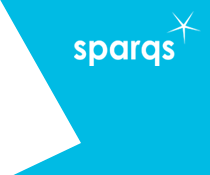In this interview we talk to Jasmin Davies-Hodge, Organisational Learning Co-ordinator at Forth Valley College. She manages Moodle/Mahara team and co-ordinates all Learning Technologies with staff and students.
1. You presented recently at a Jisc event about how you worked in partnership with students to redevelop the college’s virtual learning environment. Tell us how that project came about.
The project came about from a variety of different routes. Whilst I met with each group of class reps receiving feedback on Moodle and how the Moodle team can help with any issues the class reps were facing, it became apparent Moodle needed a revamp!
A few of the issues that were consistent was that the Moodle theme was not mobile responsive and that the site was becoming less intuitive than it had been in the past.
I created a road map of where Moodle was and where it had to be to meet the needs of students in the current climate of technology. All routes led to a new moodle theme and new Moodle framework.
I then made the ambitious decision that it was more cost effective and economical to have a brand new theme which was mobile responsive designed, instead of working on our current one. It was also more sustainable for the future to apply this theme to a brand new Moodle install, new site, new look.
Then it made sense to me to ask the students what they wanted, how they wanted their new theme to work, how they wanted to access their materials and what other features in Moodle would make it more engaging.
So the partnership between the Moodle team and the Students’ Association was formed: Team #stoodle!
2. You used a wide range of feedback tools to get student views on Moodle. Which ones worked best for you?
Yes we tried to be inclusive in giving students the opportunity to vote. We used Google forms for the final vote on the Moodle theme, this worked extremely well.
We also had paper forms in each Learning Resource Centre for students to handwrite their views and votes and a postbox to put them in. We used Twitter, Instagram and Facebook and also Moodle feedback forms. As such we have some pretty good data for planning of future objectives.
3. How much of the student view of Moodle did you know or suspect anyway? Were there any surprising things you learned from their comments?
We were pleasantly surprised with how many students responded, for example we had nearly 800 student responses to the new Moodle theme vote.
In our handwritten forms we were also surprised how much students were commenting that they wanted MORE on Moodle, more consistent provision of Moodle materials/interactions across their course or subject.
4. How did you manage to generate so many responses? Did this take a lot of work from the college and students’ association to spread the word?
It was fairly easy actually, our students are very good at interacting with our social media, and the Moodle team and the students’ association both have Facebook, Twitter and Instagram and we share each other’s posts, and are also hooked into the college’s social media. On top of this I worked with the marketing department who wrote a piece about it in the college’s student online magazine FUSION, and we also put it out on the staff’s FOCUS ezine. Covering all these bases led to the high engagement.
5. What next? How will you continue to work with students to ensure the new Moodle continues to develop in line with their views?
We have a strong Moodle/FVSA partnership which we call #stoodle and because of the new student framework that was launched here at the college, we have written objectives to work together very closely.
I have created 3 new roles for students to work with the moodle team including: Moodle Support Role, Moodle Student/Teacher Role, and Moodle Student Developer.
We have already recruited a student and teacher to pilot the Moodle Student/Teacher Role. The student will be responsible for uploading the work each week after class, discussing with the lecturer what discussions can be started in the forum, and even putting some quiz questions. So well done to them, especially the lecturer taking that leap of faith. We will keep you posted!
6. And finally, what advice would you give to institutions looking to engage students in redeveloping their virtual learning environment?
The best advice I can give is that the students want to give their views. I was worried that perhaps there wouldn’t be much interest and I was delighted to be proved very wrong. Do not be nervous about letting your students make the big decisions. It was very liberating and rewarding and your students take more ownership for your VLE, there are opinions that are valuable and we have more ideas than we needed – which gives us loads to work with over the next year.
Thanks to Jasmin for being an interviewee. To suggest a future subject for interview, please contact us.
This interview is part of a series of occasional interviews on our website with student engagement practitioners – both staff and students, and from within Scotland’s university and college sector and beyond. The interviews aim to capture the different perspectives that people have on student engagement in the quality of learning.


